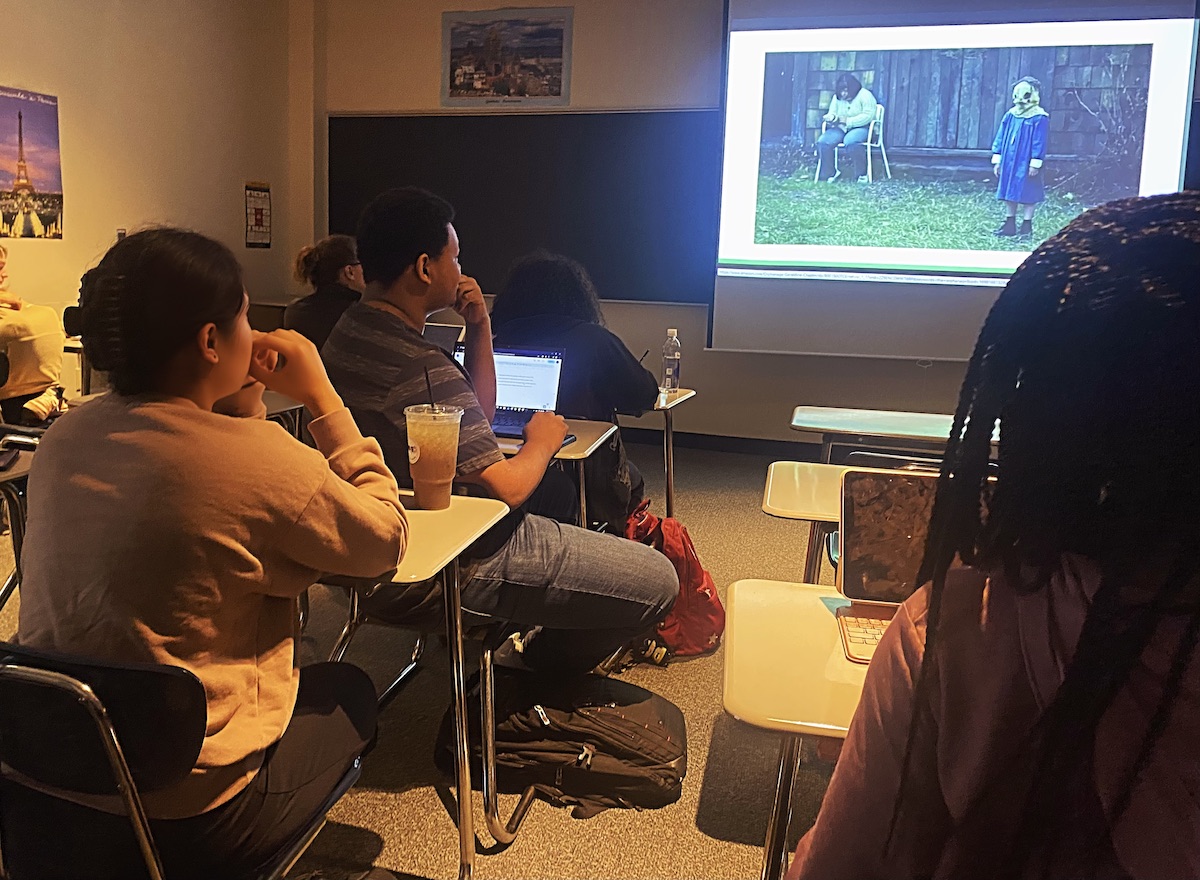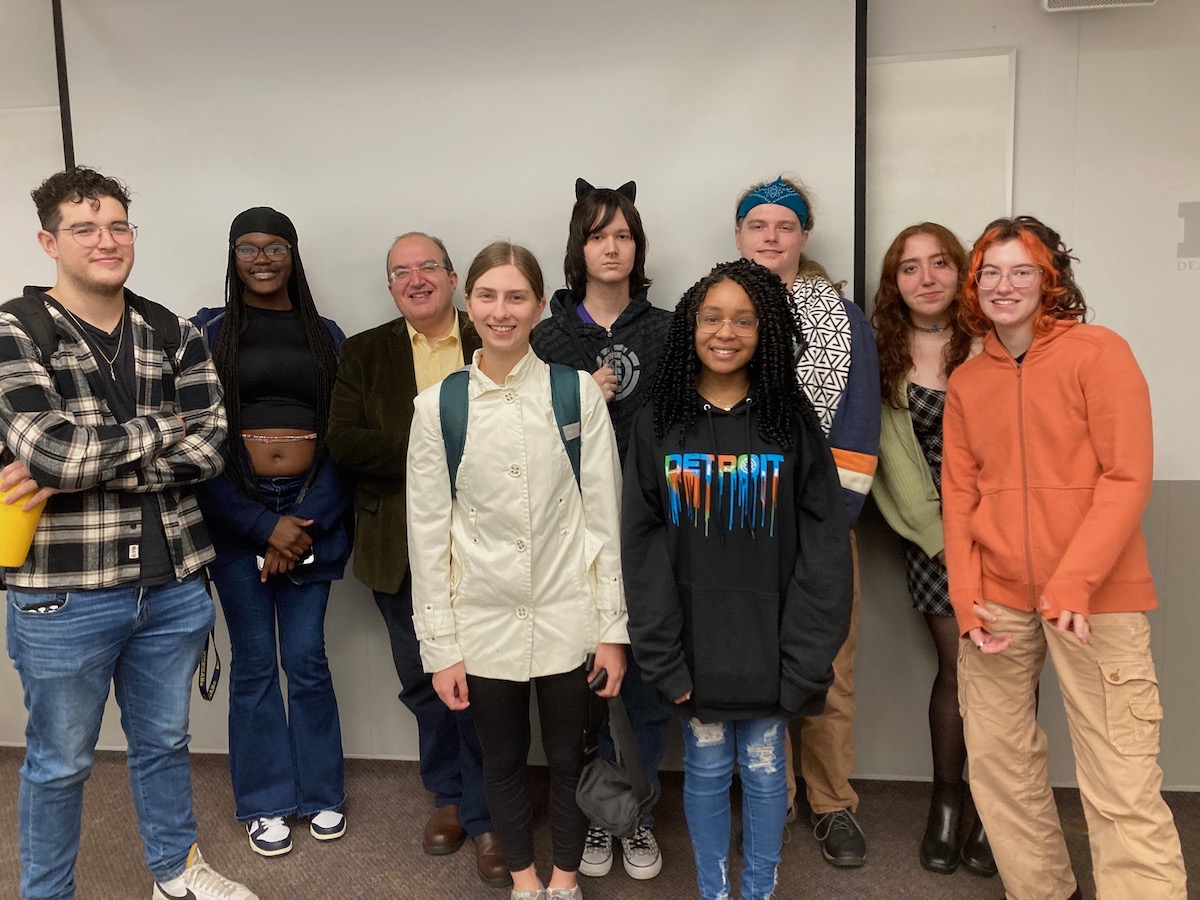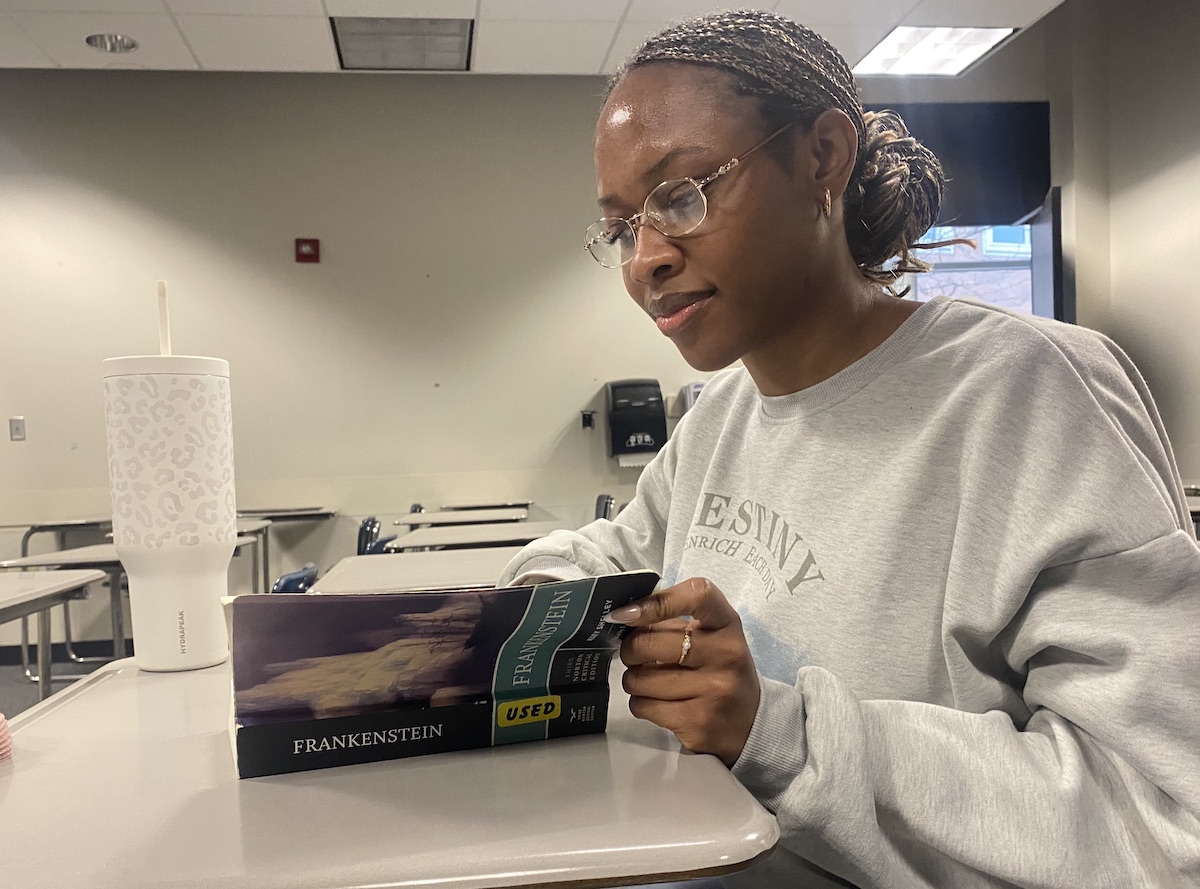Ghosts as hosts for lived experiences
At the beginning of an October class, Lecturer of Spanish Sofia Calzada-Orihuela asked her “Fearing the Unknown: Horror Fantasy in Hispanic Fiction” students if they believed in ghosts. One student said her mother sees ghosts, including one of a young girl who plays in a shoe closet. Another shared that they smell lavender when someone close to death is near. Nearly all students in the CASL Building classroom took part in the discussion, some believers and others a bit more skeptical.
Calzada-Orihuela said ghosts — lost souls stuck between realms — are an integral part of Hispanic culture. To help explain why, Calzada-Orihuela said Catholicism, which teaches the concept of purgatory, is the dominant faith in Mexico, Spain and other Latin American countries. Calzada-Orihuela, who created the course, said she’s always enjoyed hearing unusual stories and teaching this Hispanic Studies-based class provides a platform for open discussion about experiences with the supernatural and how they may tie into cultural norms and beliefs.
In addition to discussion, students in the class watch and read horror-based media — not for the jump scares but for the social commentary. For example, the Spanish film The Orphanage (J.A. Bayona, 2007) focuses on characters who lived during Spain’s conservative dictator Francisco Franco’s reign.
Viewing The Orphanage, students audibly gasped when an image of a young child — a ghost — with a sack on his head appeared. As the movie progressed, it’s revealed that the child’s mother put it over the child’s face to hide a physical deformity. It's shocking, but rooted in reality. Influenced by an authoritarian rule, people often believed a mother’s sins caused a child to be born with a deformity or disability, Calzada-Orihuela said.
“Because of shame, people hide many things,” Calzada-Orihuela said. Unless it is your area of study, you might not find discussing the impact of a Spanish dictator from 50-plus years ago interesting. But it’s important to know the effect this had. Adding a pop culture element brings awareness to a larger audience







